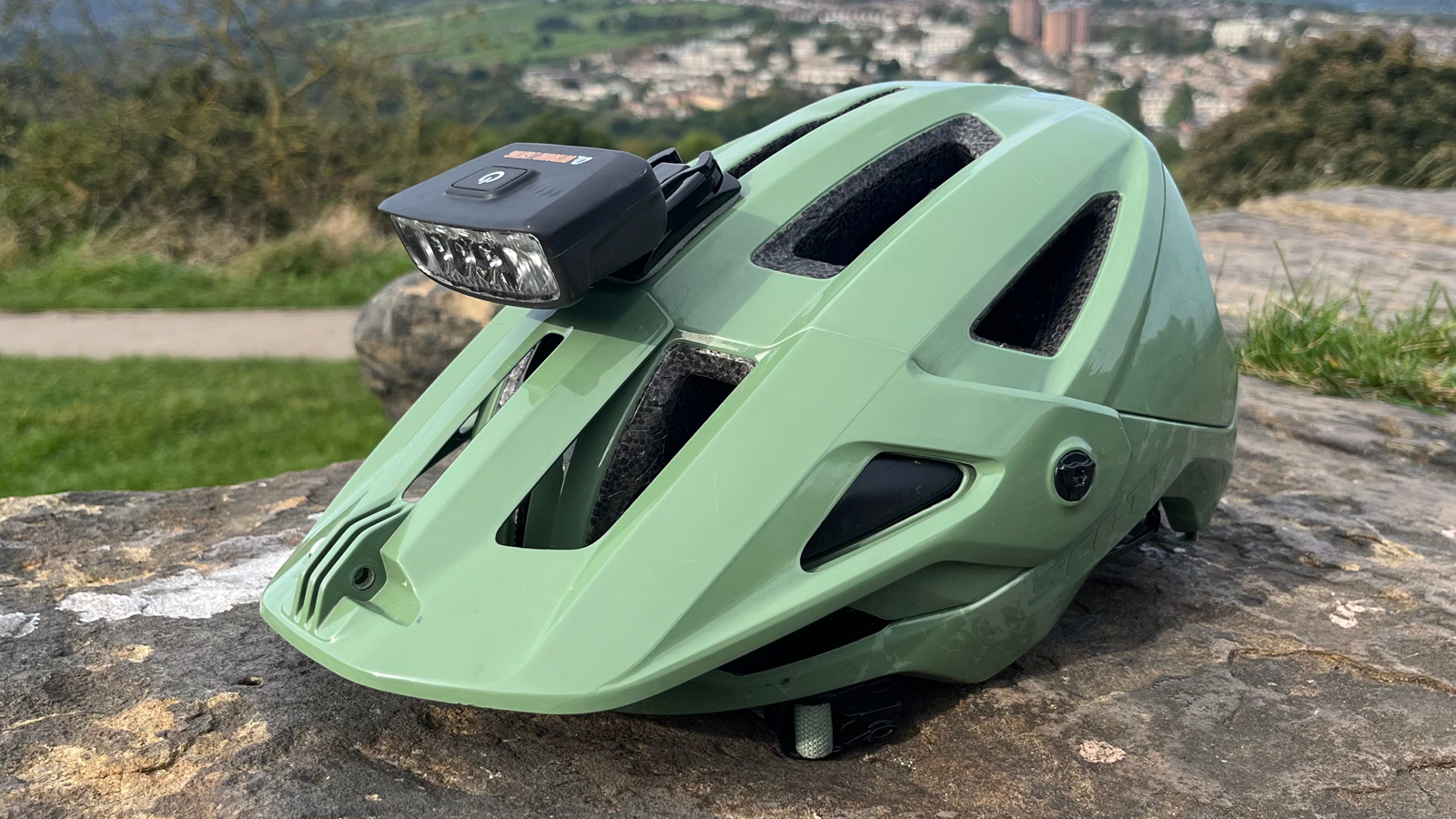
Contrary to its name, the Hangover Light has nothing to do with excess alcohol intake. Instead, it's named after the famous hangover trail in Sedona, AZ. Much like the brand's leading MTB light, the Trail Evo, it combines features to create the optimum light instead of chasing high-lumen output figures to make some of the best lights for night riding. In fact, Outbound says: “We don’t care to try and be the ‘best’ in any specific category because doing that compromises other criteria that are important for a high-performing bike light.”
The Hangover is designed to work perfectly alongside the Trail Evo handlebar light and can also be bought as a set in the Evo Downhill package. Much like its bigger brother, it is handmade in their Chicago factory and tested by their in-house team of riders and rally driving enthusiasts. This is the first time we have tested lights from Outbound, but they will surely feature in our best MTB helmet lights guide in the future.
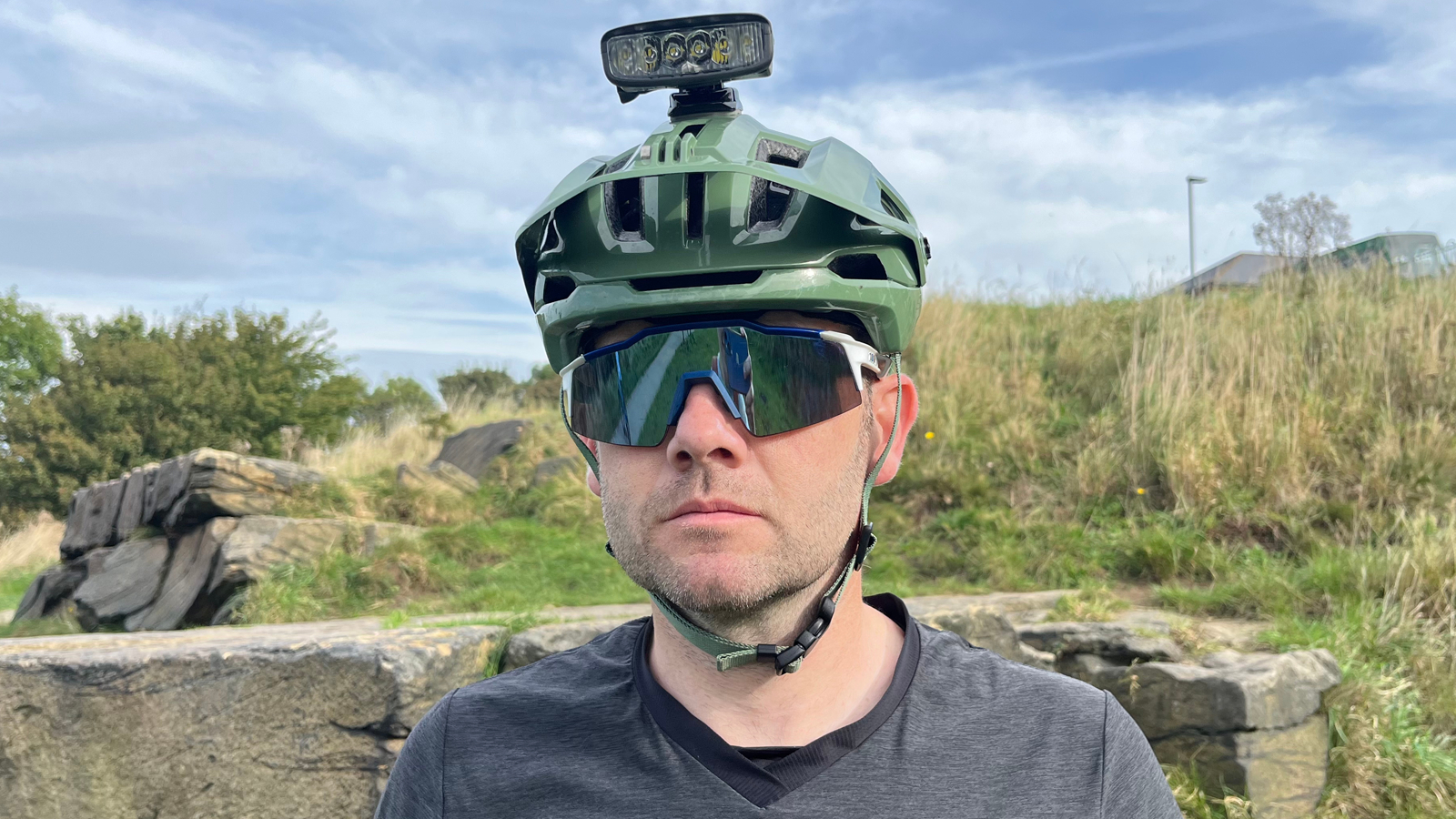
Design and specification
Helmet lights often have more of a spot-style beam to pick out objects, but not so here. Outbound uses a wide light pattern designed to fill your entire field of vision. The unit features six LEDs that give out approximately 1,000 lumens, but that number only really tells a part of the story. Outbound says the lens is one of the areas that they worked the hardest on, using various design and analysis software packages as well as lots of time riding to make the most of the available lumens.
It's a lightweight unit at 125g, which is especially impressive when considering it is a self-contained unit with batteries and lights in one package. That weight includes the widely used GoPro-style mount that sticks to your helmet using a high-strength adhesive sticky backing. I'd like to see a better attachment like the offering from industry benchmark Exposure, although the mount stayed in place and worked perfectly throughout testing, despite catching it on a few low-hanging branches along the way.
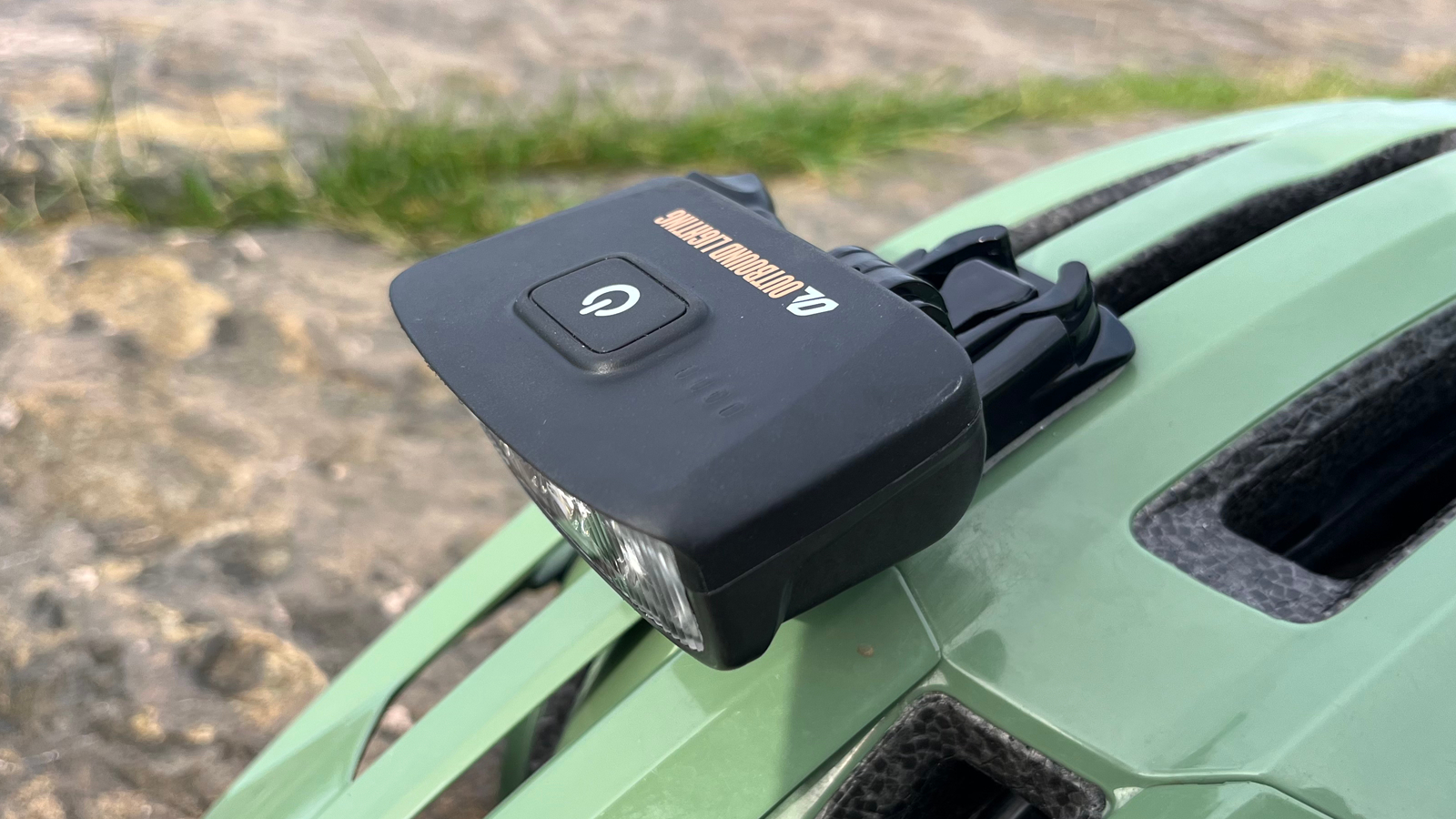
The compact unit uses a 3.6V 3,500 mah battery to power its six LEDs, which gives it run times from 72 mins in high to a crazy 390 in low mode. In keeping with the rest of the lights on offer from Outbound, it keeps the features and buttons to a minimum so you can concentrate on riding, with one large button that toggles through the various outputs. It has four main modes and two flashing options, low, medium, and high, as well as the adaptive mode, which starts at full power and, over the course of 30 minutes, drops the power down to the medium setting. This gives your eyes time to adjust to the dark conditions while increasing the run time to 100 minutes to maximize run time at high outputs.
Outbound uses a pass-through charging system on their lights, which means you can charge the light whilst it's in use – great for last-minute ride plans or long-distance riders and racers. Simply plug in any USB-C power source, and it will charge the unit in use. Charge time is a very quick three hours, too, thanks to the inclusion of USB-C quick charge 3.0.
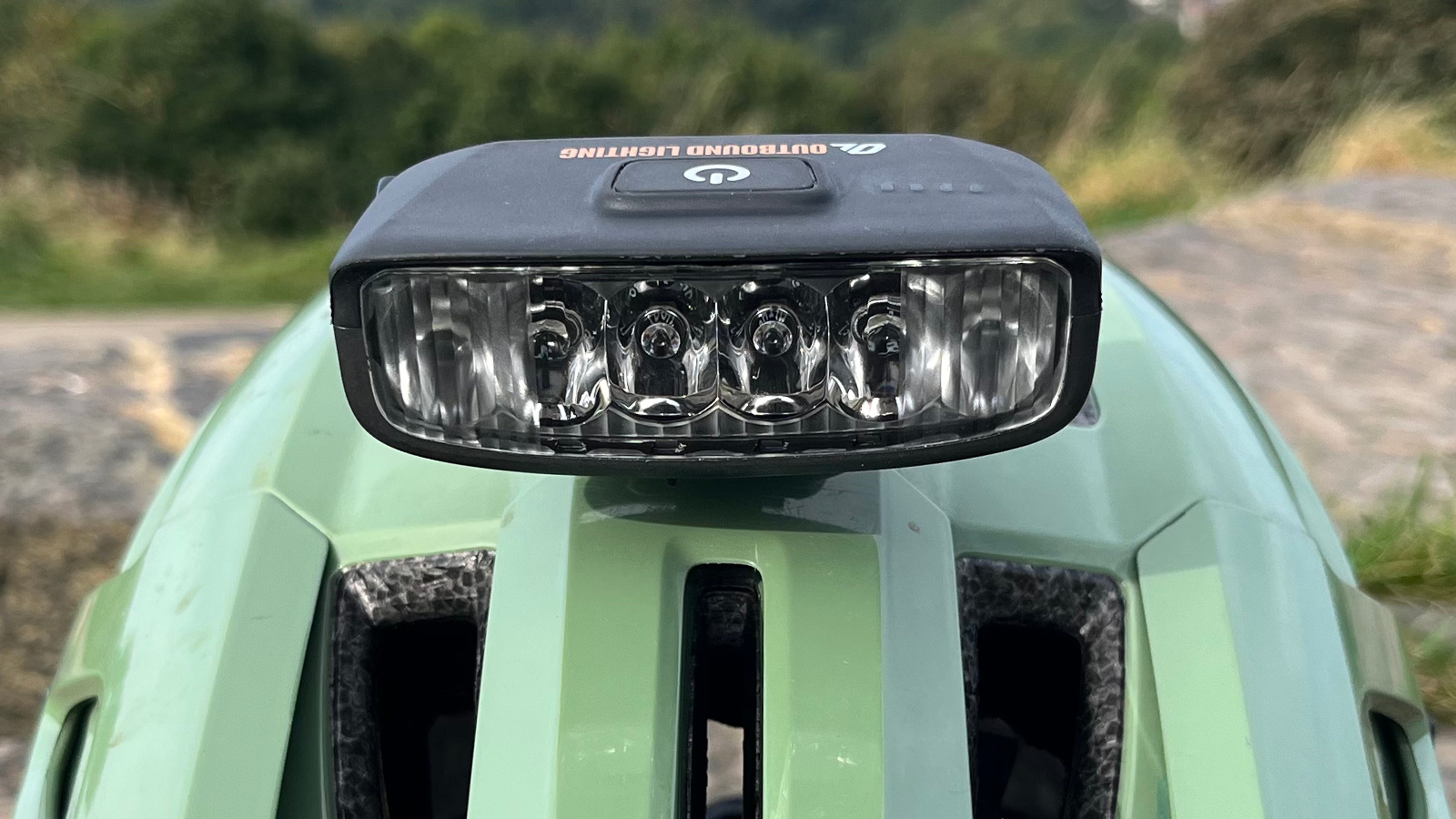
Performance
The helmet I usually use for night rides has a dedicated GoPro mount built into the visor, but unfortunately, due to the orientation of the light's slotted mount, it wouldn't fit, so I had to use the stick-on adaptor which worked perfectly well and stayed in place throughout the test, although it would be nice to have a bracket I could easily remove and use on other helmets.
Once fitted, the operation was simple and straightforward. The four modes are easy to understand and work intuitively well on the trail. I spent most of my rides in Adaptive mode, finding this the best balance between power and run time. The trickle-down in power was barely noticeable, to be honest, with the timing of the power dropping working well with my eyes adjusting to the darkness. The button worked well, although I think it would benefit from either sitting proud of the rest of the unit or having a more audible click as I had to feel around to find it when riding, and it wasn't the easiest to locate in a hurry with gloves on.
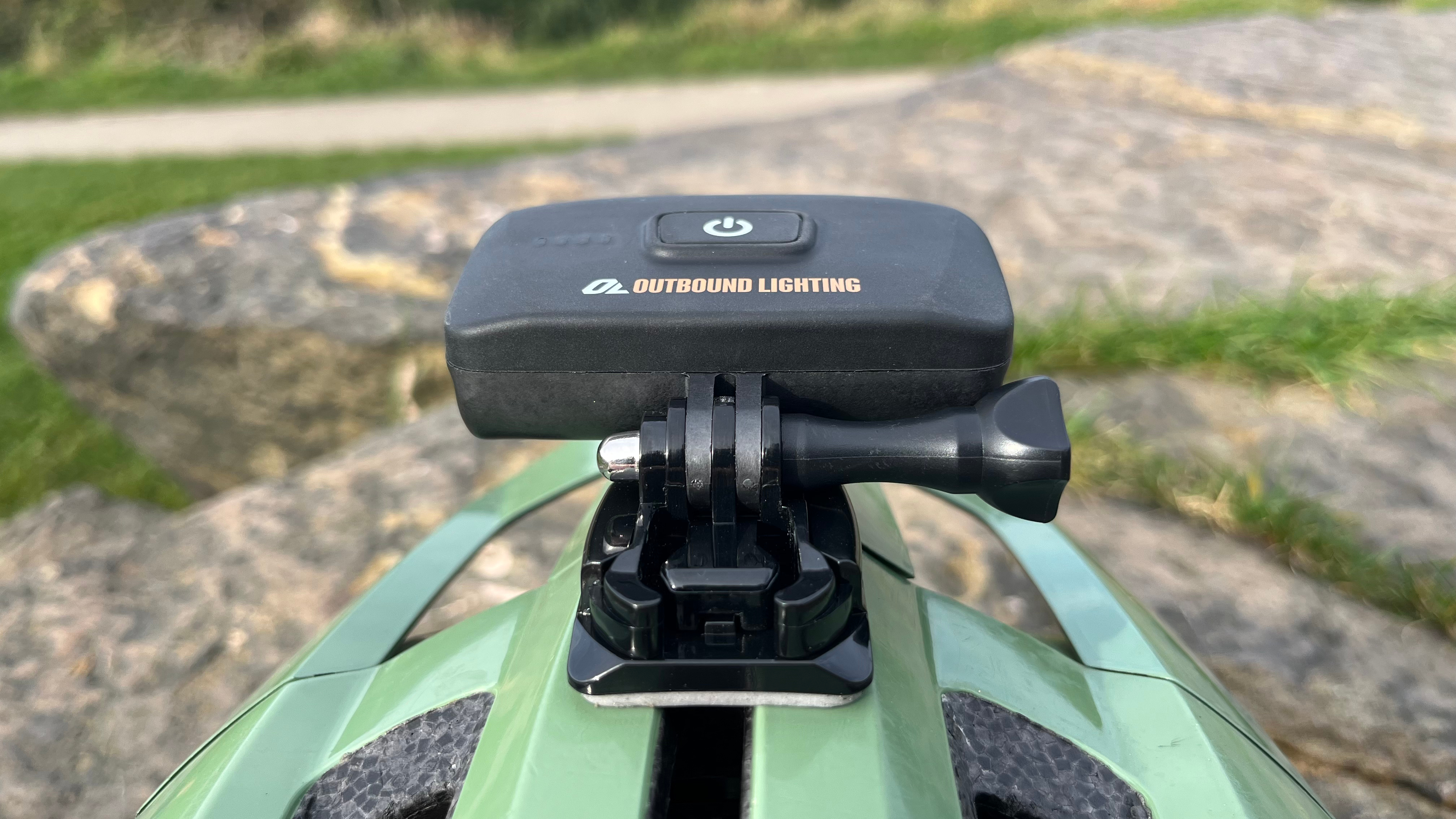
The broad beam was different from other headlights I've used, and at first, I thought it would be too wide and lack the accuracy that a spot beam provides, but this wasn't the case at all. Although only 1,000 lumens, it makes the most of them, with consistent coverage and a clarity that was noticeably better than previous headlights I've used.
Run time was accurate for the test period, in which I used adaptive or full power mainly with no issues. It hasn't been that cold lately in the UK yet, so I didn't get a chance to test below six degrees, but given the quality of the lights and given they are tested in the cold winters of Chicago, I'd not expect any issues there.
Although it is lightweight at only 125g, I could feel it when riding, although I expect a lot of this was down to the extra movement when using a MIPS-equipped helmet.
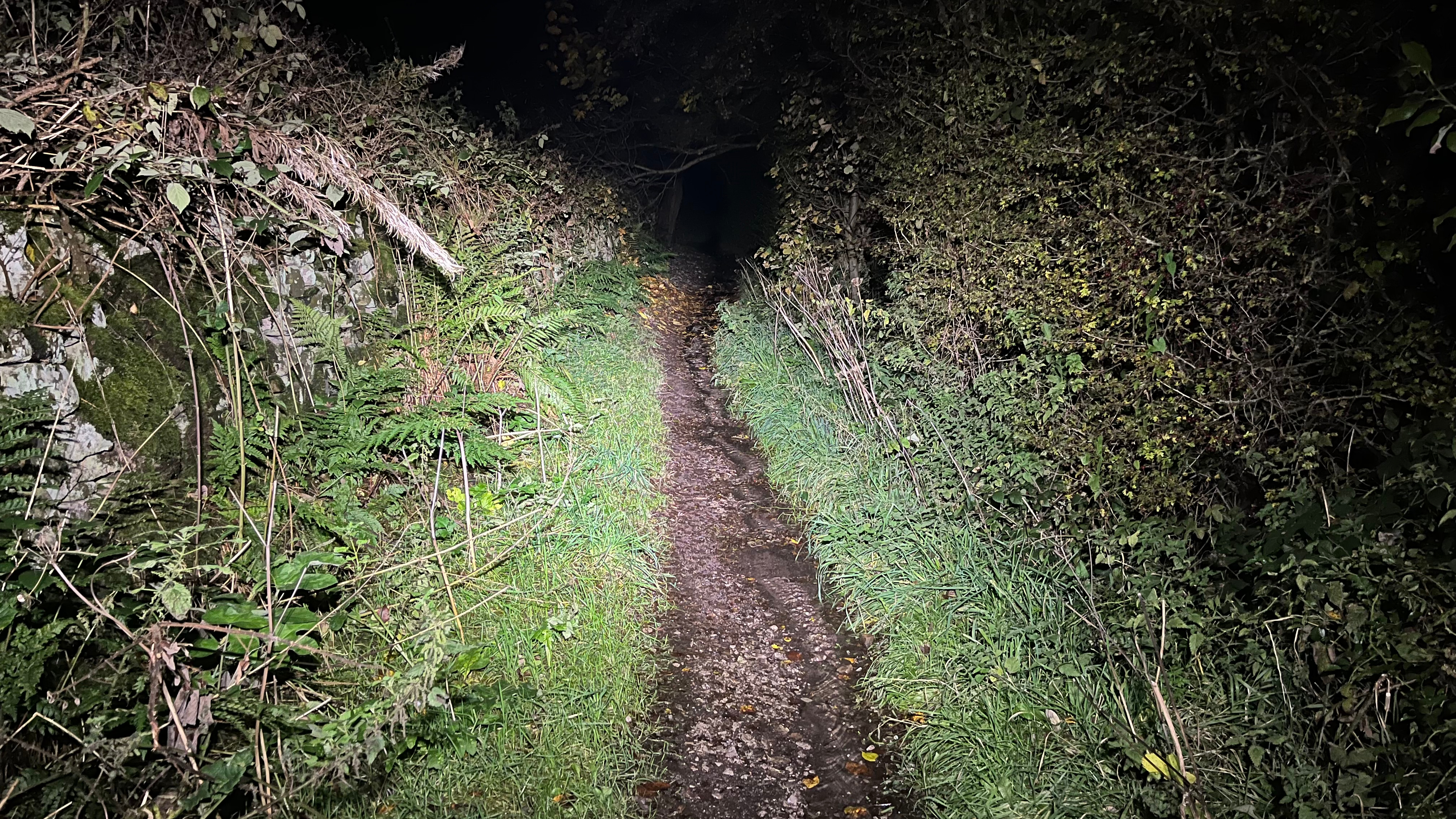
Verdict
A great fit-and-forget product for those who like to spend more time riding and less time messing about with overly complicated protocols and instructions. It is very well made, with thoughtful and helpful features built in that should see it in service for many winters to come.
The bracket fitting feels a little out of place compared to the rest of the light, and the switch wasn't the easiest to use in gloves, but overall, it is a great light that I have really enjoyed using, especially when paired with the Trail Evo handlebar light.
For more information, check out outboundlighting.com.
Tech specs: Outbound Lighting Hangover
- Price: $135 / £112 / €128.95
- Weight: 125g
- Output: 1,000 lumens max
- Run time: 72 mins on high/ 390 mins on low
- Lens: High-clarity PMMA lens
- Materials: Magnesium lower shell, high-strength polycarbonate substrate







